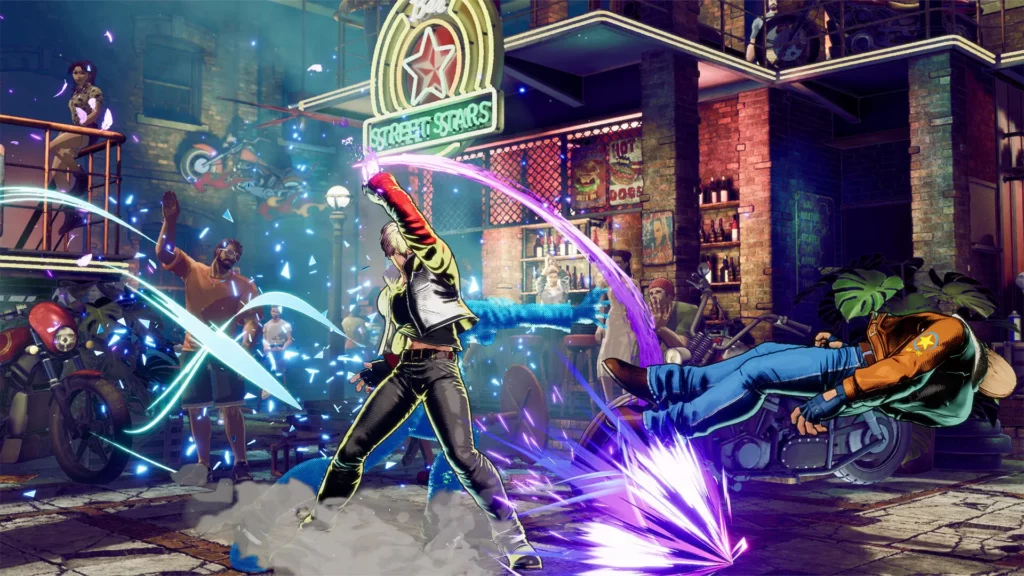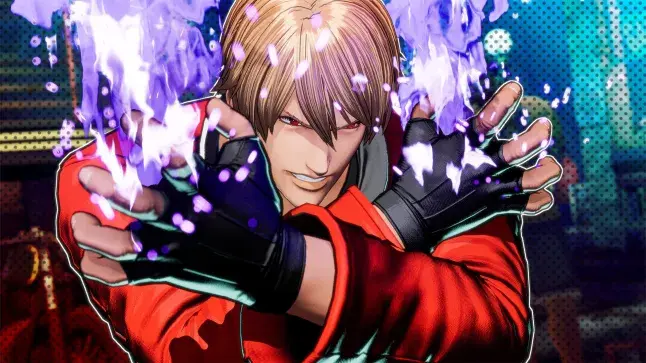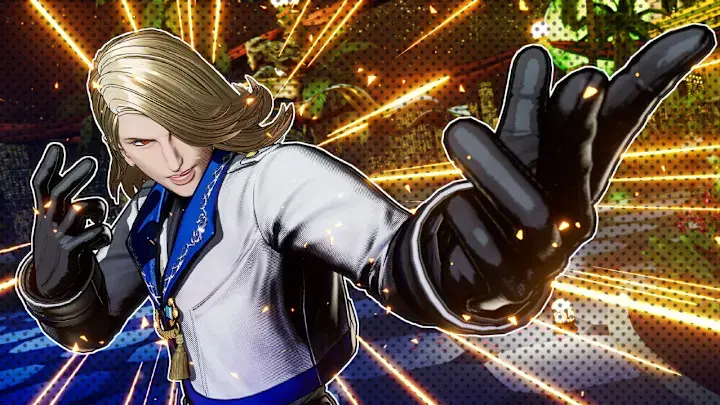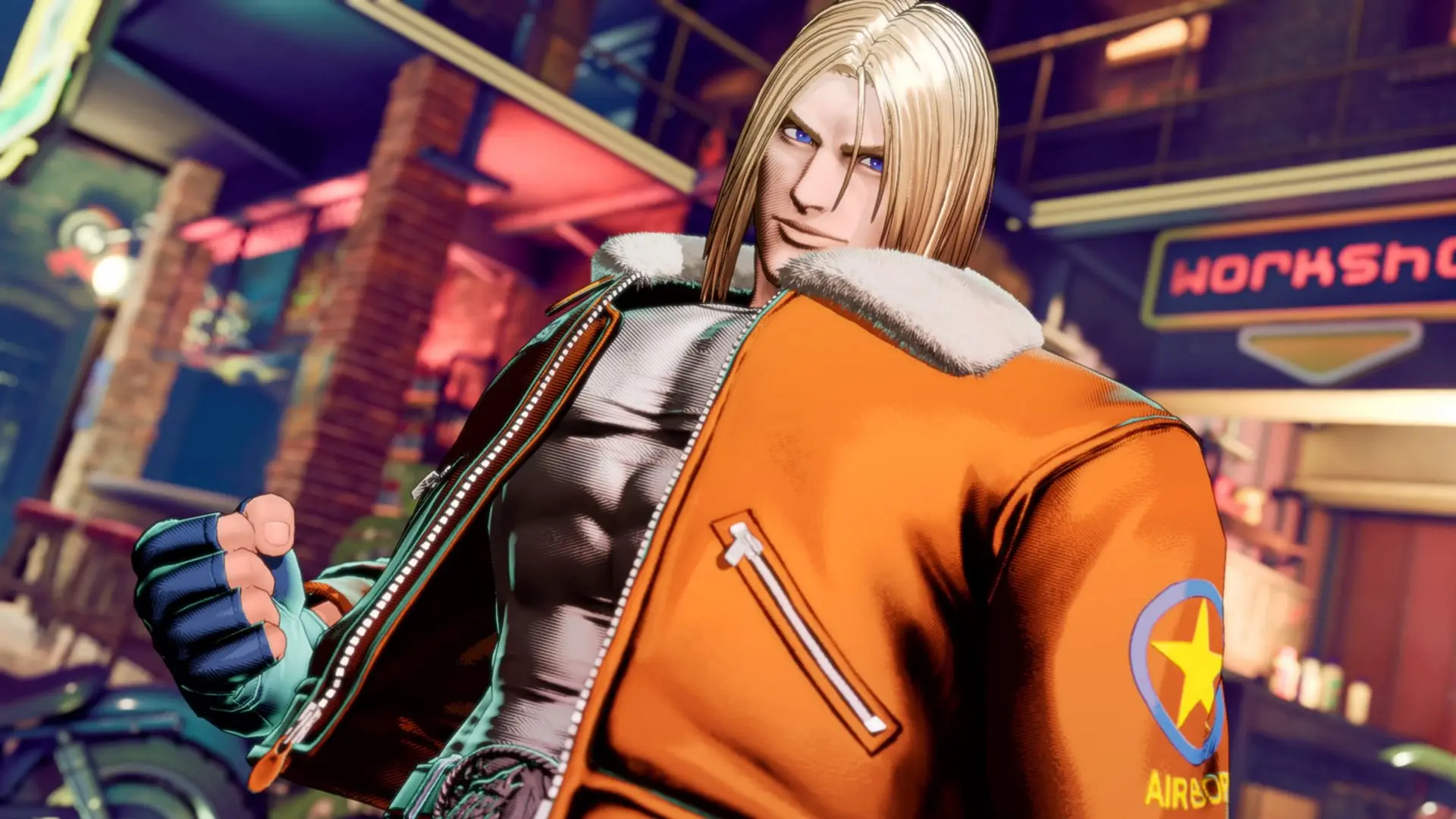After more than two decades of silence, Fatal Fury makes a triumphant return with City of the Wolves, reigniting its legacy as a direct rival to Street Fighter. While SNK has kept itself busy with other franchises such as King of Fighters and Samurai Shodown, the distinct style and structure of Fatal Fury have remained missed by fans of more traditional 2D fighters. City of the Wolves arrives as a streamlined, aggressive, and mechanically rich alternative to modern fighting giants, notably sidestepping many of the newer gameplay shortcuts like Drive Impacts or throw loops.
Despite some modern standards being absent—such as a more intuitive UI and certain expected features—City of the Wolves delivers in all the critical areas that matter to fans of the genre. When it lands, it hits hard—just like a well-timed Buster Wolf.
Classic Combat with a Modern Twist
Staying true to its roots, City of the Wolves utilizes a four-button control layout—light and heavy punches and kicks—with close and far variations for each. Close-range attacks tend to deal more damage and offer better combo opportunities, while distant strikes are ideal for spacing and counters. What truly distinguishes this game from others like Street Fighter 6 is the lack of universal movement options; no character has a built-in teleport, projectile immunity, or a high-speed dash to maintain pressure. Each fighter must approach differently, and doing so carries real risk, enhancing the mental back-and-forth that defines competitive play.

One player remarked that while quick bypass mechanics are enjoyable, they appreciated how the game emphasizes tactical spacing and adaptation, forcing each combatant to understand and predict their opponent’s strategy. This approach allows characters with more advanced mobility options to feel unique and powerful in their own right.
The Rev Meter and Tactical Depth
City of the Wolves introduces the Rev Meter, which functions similarly to the Drive Meter in other titles but builds over time rather than depleting. Players begin each round at 0% and increase their meter through defensive blocks or activating special techniques. These include EX moves, Rev Guards (which mitigate chip damage and push opponents back), and Rev Blows—armored strikes that demand attention.
Once the meter reaches 100%, players enter an Overheat state where Rev techniques become locked, and blocking drains the guard gauge. When depleted, a player is vulnerable to a full combo. This system adds high-stakes decision-making, especially since EX moves can be chained for massive damage, quickly ramping up the meter. The trade-off between finishing a powerful combo or saving meter for future rounds adds strategic depth.

While Rev Blows can feel overly generous due to their low cost and safety on block, especially at lower skill levels, experienced players have ways to counter them. The most effective is a Rev Blow of their own, though this is only possible during SPG (Selective Potential Gear)—a unique buff that activates during a player-chosen segment of their health bar. However, if a player sets this buff to a later health stage, they may be left defenseless early on against this powerful tool.
Flexible Combo Design and Balanced Systems
Despite a few gripes, combat in City of the Wolves is dynamic and rewarding. Players can string together EX moves for easy damage or execute complex combos involving feints and braking for higher reward. This duality caters to both casual players and seasoned veterans.
The game also offers strong defensive mechanics. Players can roll forward or backward when waking up, are briefly immune to throws, and can use Just Defend or Hyper Defense systems to punish careless offense. These systems help ensure fights remain varied and skill-driven.

A Diverse and Fresh Roster
Launching with 17 characters, City of the Wolves includes most of the classic Mark of the Wolves lineup and four newcomers. Preecha and Vox Reaper stand out—Preecha brings Muay Thai flair with accessible yet satisfying combos, while Vox Reaper excels in rushdown tactics, compensating for his lack of projectiles with rapid movement and unblockable pressure.
Returning fighters like Terry and Hokutomaru are just as compelling. Terry brings familiarity for longtime fans, while Hokutomaru impresses with his unorthodox mobility, including double jumps and air projectiles that distort jump arcs and bait counters.
The Guest Characters Dilemma
Guest fighters Cristiano Ronaldo and Salvatore Ganacci add mechanical novelty, though their inclusion feels tonally out of place. Ronaldo’s soccer-themed attacks enable creative setups involving summoned balls, while Salvatore plays as a comical bruiser whose animations borrow heavily from his music videos. Despite being fun to use, these characters lack the narrative integration or visual flair expected from a series with Fatal Fury’s legacy. Ronaldo, in particular, doesn’t appear in major single-player modes, making him feel like an afterthought.
Single-Player Experience and RPG Elements
City of the Wolves offers a standard Arcade mode with character intros, rival battles, and endings—sufficient, though nothing groundbreaking. However, the standout is the Episodes of South Town mode, which introduces RPG-lite elements. Players choose battles from a map, earn experience, and unlock skills and stat upgrades that flesh out each character’s journey. Some matches feature special conditions—like opponents immune to damage except for rare, instant-kill strikes—that vary the gameplay, though not always enjoyably.
This mode enhances the overall package by giving players more story context and a sense of progression often missing from traditional arcade campaigns.
Room for Improvement in Learning Tools
One notable weak point is the tutorial system. Although it covers core mechanics, it fails to contextualize many advanced techniques. For instance, it barely addresses how to counter Rev Blows or use Brakes effectively, even stating that it’s a topic for another time—without actually offering a follow-up lesson. This gap can hinder newer players trying to master the game’s deeper systems.
Online Performance and Interface Woes
In terms of multiplayer infrastructure, City of the Wolves includes rollback netcode, which is essential for modern fighters. The online experience during pre-launch and beta phases was generally solid. However, poor connections revealed some weaknesses, with occasional lag and input drops. While it’s competent, it doesn’t reach the consistency of industry leaders.
Matchmaking options are present—ranked, casual, and room matches, plus replay tools—but the interface for navigating these modes is notably clunky. The room match menu feels outdated and sluggish, resembling something from office software rather than a high-end fighting game. It doesn’t ruin the experience but feels jarringly at odds with the otherwise stylish in-game presentation.
Final Verdict
Fatal Fury: City of the Wolves stands as a strong comeback for SNK’s iconic fighter. Its combat is a satisfying modernization of the classic Fatal Fury formula, presenting a grounded yet exhilarating alternative to the flashier styles of contemporary rivals. The roster is diverse and mechanically rich, and while the guest characters raise eyebrows, they don’t derail the overall quality.
Some blemishes remain—from limited teaching tools to dated menu design—but the core fighting system is excellent. After a 25-year hiatus, City of the Wolves proves that Fatal Fury still has bite.
